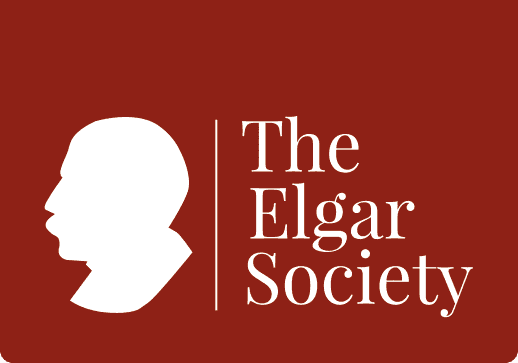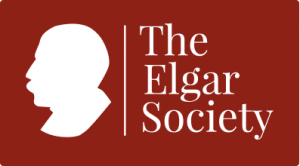Musical Excerpts
A list of major musical pieces from Elgar.
Cello Concerto in E Minor
Elgar wrote the Concert Allegro in response to requests for a piano concerto from Fanny Davies, a well known concert pianist of the day…
Elgar had considered making an orchestral arrangement of the Concert Allegro but the score disappeared until 1968 when it was found among papers in the estate of the late conductor and pianist, Anthony Bernard.Diana McVeagh and John Ogdon prepared a revised performing version in 1968 that was premiered on television on 2 February 1969 and a recording was subsequently released. This version, whilst of the original length, did not go back to the originally conceived work and was, in effect, what Fanny Davies had performed. David Owen Norris has prepared and recorded a version as close to the original as possible, restoring the work to its rightful place in pianistic literature whilst regretting that its poor original reception might have deprived the world of any further original and substantial piano works, apart from In Smyrna.
Concert Overture Froissart
Following their marriage in 1889, the Elgars settled in London. Edward hoped that the move would help him establish a national rather than purely provincial reputation but it was not to be. In truth, at that time Edward had written little to justify the status he aspired to. After eighteen months of comparative hardship and disappointment, he and Alice returned to live in their native Worcestershire.
It is therefore somewhat ironic that, while in London, he received a commission from his home town that was to lead to Froissart, his first published work to gain a measure of national recognition. The commission, from the Worcester Festival Committee in November 1889, was for a short orchestral work to be premièred at the 1890 Three Choirs Festival.Elgar composed most of the work during Spring 1890, completing it in July shortly before the birth of his daughter Carice and in good time for the festival.
The work received measured acclaim from the critics, tempering their praise for its originality and gusto with criticisms of a degree of repetitiveness and the lack of a coherent development. This is fair comment, for although the work contains in embryonic form many of the hallmarks that Elgar was to perfect in his mature output, Froissart displays a certain innocence and lack of polish. The more perceptive critics commented on the promise they saw in the work, a faith which Elgar fully repaid in the decade to come.
My Love Dwelt In A Northern Land, op. 18 no. 3 (1889)
Words by Andrew Lang (1844-1912)
Elgar composed part-songs throughout his working life, often, it seems, almost as a form of relaxation while working on large-scale pieces or on holiday. The earliest that remain in the standard repertoire are two composed in 1889 shortly after his marriage to Alice – O Happy Eyes and My Love Dwelt in a Northern Land…
Late 1889 was an exciting time: Edward had had Salut d’amour published by Schott,Vesper Voluntaries, to be published, like his Queen Mary’s Song, by Orsborn & Tuckwood. At the same time he composed two part-songs. O Happy Eyes was a setting of verses Alice wrote in February 1888, before their engagement, and was probably composed simultaneously with My Love Dwelt in a Northern Land.
The part-songs were left in January 1890 for a contact at Novello with a request from the composer to “bring them quickly under the notice of your firm. You may remember I have been requested to write for Worcester Festival & am very anxious to get some things introduced & published before that event.” Novello accepted only My Love Dwelt in a Northern Land, for 100 printed copies in exchange for the copyright. Four years later, Alice persuaded Edward to re-submit to Novello the rejected, but now revised, O Happy Eyes, and this time they accepted the song, paying 3 guineas for it, a pointer to Elgar’s enhanced reputation.
Ivor Atkins gave a fine performance of My Love Dwelt in a Northern Land in December 1921. In a letter of 8 December 1921, he wrote to Edward, “I atoned for a very imperfect performance I gave in your hearing about 21 years ago … People insisted upon an encore and the choir sang it even better
the second time”.
String Quartet
Elgar composed two part-quartets in 1878 and a complete one in 1887 but these were set aside and/or destroyed. Years later, the violinist Adolf Brodsky had been urging Elgar to compose a string quartet since 1900 when, as leader of the Hallé Orchestra, he performed several of Elgar’s works. Consequently, Elgar first set about composing a String Quartet in 1907 after enjoying a concert in Malvern by the Brodsky Quartet. However, he put it aside when he embarked with determination on his long-delayed First Symphony…
When he eventually returned to the genre, it was to compose an entirely fresh work. It was after enjoying an evening of chamber music in London with Billy Reed’s quartet, just before entering hospital for a tonsillitis operation, that Elgar decided on writing the quartet, and he began it whilst convalescing, completing the first movement by the end of March 1918. He composed that first movement at his home, Severn House, in Hampstead, depressed by the war news and debilitated from his
operation. By May, he could move to the peaceful surroundings of Brinkwells, the country cottage that Lady Elgar had found for them in the depth of the Sussex countryside. The String Quartet was thus the first of three chamber works that he tackled in 1918, inspired by his Sussex surroundings.
He resumed work on the quartet in October 1918, beginning the second movement on his wife’s birthday and producing a work she likened to “captured sunshine” and subsequently requested that it be played at her funeral. After her death on 7 April 1920, this movement was indeed played by Albert Sammons, Billy Reed, Felix Salmond Salmond and Lionel Tertis at the service in Malvern. Elgar began the third movement on 8 December and finished it on Christmas Eve.
The Sanguine Fan
It was Elgar’s close friend and confidante Lady Alice Stuart-Wortley (Windflower) that asked Elgar in January 1917 if he would write The Sanguine Fan. The ballet was to be included in a matinée performance to be staged in London in March of that year for the benefit of wartime charities…
The name derives from the fact that the theme of the ballet was inspired by a scene depicting Pan and Echo that a local artist had drawn in sanguine on a fan. The title is thus incidental to the theme.
Elgar, attracted both by the cause and the whimsical nature of the theme, responded willingly to Windflower’s request and within a month had composed the original score. After the first performance, which he himself conducted, Elgar added a further piece – a shepherd’s dance – which was premièred at a second charity performance in May 1917.
The Starlight Express
The First World War was at its height when Elgar was approached in November 1915 to write the incidental music for a play to be staged in the West End of London at the end of the year. The play, The Starlight Express, had been adapted by Violet Pearn from the novel A Prisoner in Fairyland by Algernon Blackwood. As demanded by the times, the story is a nonsensical piece of escapism. A family of children, trapped in the oppressive world of adults, forms a secret society whose members collect stardust and live in star caves. The seek to rescue their parents from an earthly existence and eventually succeed, taking them also to a star cave…
Elgar initially chose simply to recast this youthful music a second time, setting words to the tunes to form the incidental music to the play. Once seized with the task, however, Elgar continued to write much new music and, in a hectic period of little over a month, produced almost 300 pages of score.
The first performance took place on 29 December 1915 but the play was not a success and ran for only a month. Elgar blamed the stage settings which differed considerably from his preconceptions – at two days’ notice he refused to conduct at the first performance. But, in reality, much of the blame must be placed on the storyline which lacks the charm of Barrie’s work. Today it appears contrived, trite and dated. It has rarely been performed since, with a BBC radio reconstruction of the play in the early 1960s a notable exception.
The music survives, however, with several recent recordings currently available. Though often regarded as lightweight theatre music, like the Humoreske Broadheath and Wand of Youth suites before it the music embodies an intricacy and polish that places it on an equal footing with the best of Elgar. It demonstrates his mastery of the orchestra and ability to turn superficially harmless little tunes into something quite compelling.

